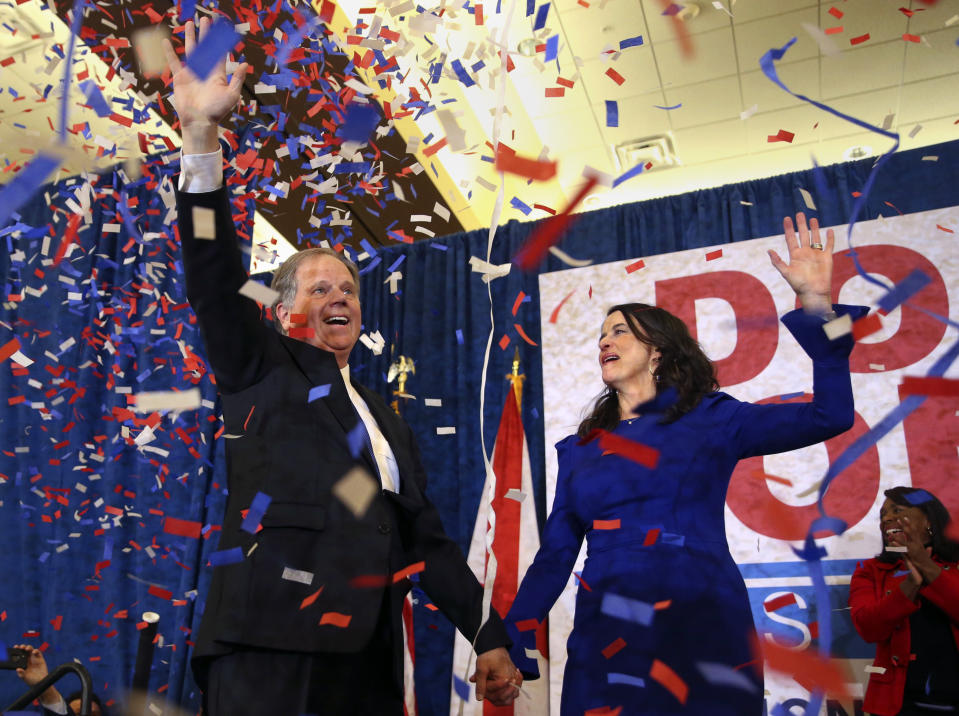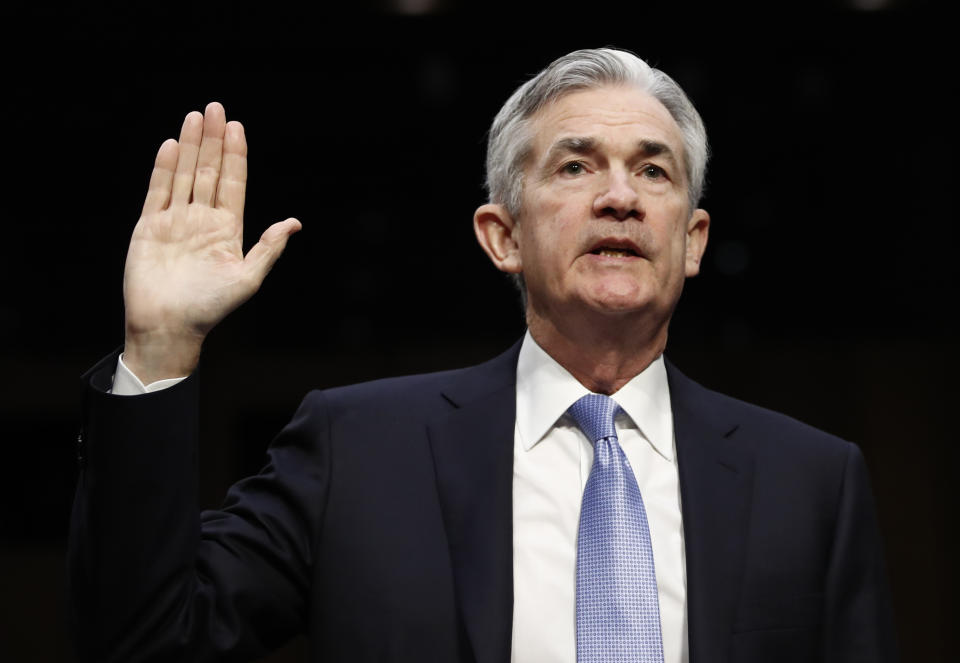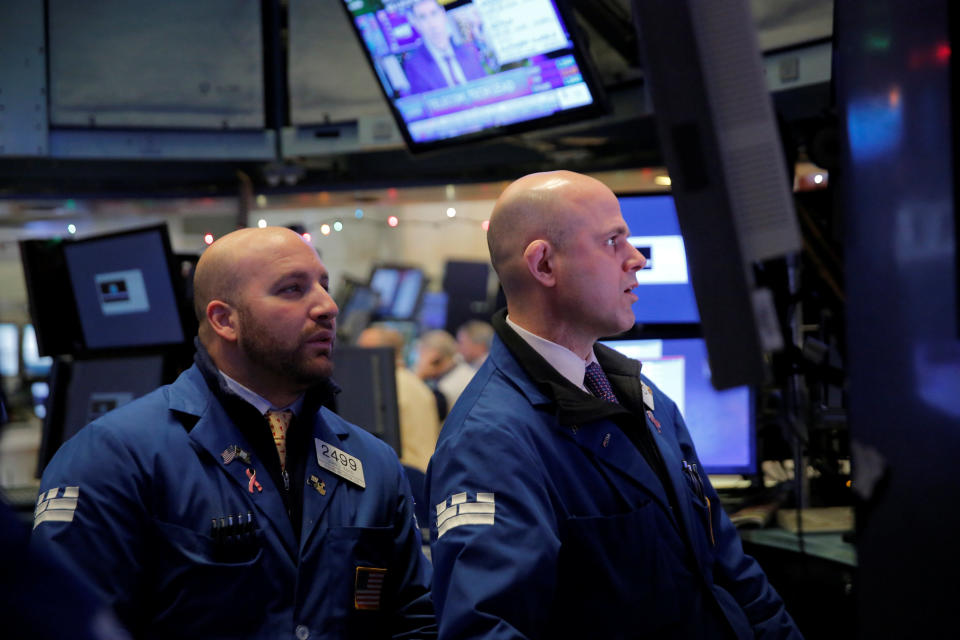Six market themes to track in 2018
2017 is in the books. When all was said and done, 2017 went down as one of the best years for stocks since the financial crisis, with the major U.S. averages gaining at least 20% amid a global equity rally.
And while the first year of the Trump administration may have seemed politically chaotic, the year in markets was defined by historically low volatility. The global economy saw a year of synchronized growth, central banks remained friendly to markets but signaled a change in the years to come, and tax cuts in the U.S. pushed out expectations for an economic downturn.
In 2018, Wall Street stock strategists expect more of the same — double-digit returns amid strong global growth and strong corporate profits. But outside of a view of where markets might go and why, here are six other themes that should be a big part of the markets discussion in the year.
1) What’s next after taxes?
The Trump administration spent most of 2017 focused on getting a tax bill passed. They succeeded.
All year, the discussion in markets seemed focused on whether 1) tax cuts were priced into the market and 2) whether the market “needed” tax cuts to passed in order to maintain its year-long rally. In the end, tax cuts were sort of priced into the market — we saw a rally, but not a huge one, into year-end when tax reform looked like a done deal — and we never got an answer to the second question. Tax cuts passed. The hypothetical is moot.
The next item on the Trump agenda appears to be infrastructure.
President Trump said in late December that infrastructure would be a “perfect place to start” in a push for Democrats and Republicans to start working together on legislation.

The complication, however, is how to fund infrastructure given the $1.5 trillion Republicans just added to the national debt over the next decade as part of their tax plan. In September, reports indicated that Trump told lawmakers public-private partnerships for infrastructure are “more trouble than they’re worth.”
But with former deficit hawks in the Republican caucus having changed their views on adding to the national debt to support lower corporate taxes, it is unclear if the political will exists to again take on debt to fund infrastructure projects that offer even less-clear promises than the additional economic growth lower taxes are expected to generate.
And as Yahoo Finance’s Rick Newman noted recently, at the outset of the year not all of Trump’s campaign ideas were market friendly. And the friendliest of them all — tax cuts — is already done. Where Trump’s agenda goes from here, then, is a huge question mark for markets.
2) Midterm elections
Despite controlling neither chamber of Congress or the presidency, Democrats had a decent 2017.
The party picked won governorships in Virginia and New Jersey — with New Jersey flipping from Republican to Democrat control — and the year’s biggest surprise came in December when Democrat Doug Jones defeated Roy Moore in Alabama’s special election to fill Attorney General Jeff Sessions’ vacated Senate seat.
So if markets spent all of 2016 in stasis waiting for the results of the U.S. presidential election, expect anticipation of the midterm elections to exert a similar pressure on investors in 2018, particularly if Trump’s agenda appears to stagnate after having a signature item completed in 2017.

NBC News notes that in every midterm election since the Civil War, the current president’s part has lost 32 House seats and two Senate seats, on average. Currently Republicans control the Senate by just one seat and the House by 24 seats.
Were Republicans to lose control of one or both chambers of Congress, the trajectory of Trump’s agenda would be notably altered. Either Trump could become serious about the bipartisanship that he has in the past said will return to the U.S. political process, or Trump will be stuck in the same box as his predecessor Barack Obama who spent his final six years in office battling Republicans lawmakers who ceded no ground in legislative negotiations.
The Republican standoff with Obama led to, among other things, automatic spending cuts in 2013, a government shutdown in 2013, and a downgrade of the U.S.’ credit rating in 2011.
3) Inflation and the next recession
In 2017, outgoing Federal Reserve chair Janet Yellen made waves by calling the lack of inflation in the economy a “mystery.” As of November 2017, “core” PCE — which excludes the more volatile costs of food and gas and is the Fed’s preferred inflation metric — indicated prices rose 1.5% year-over-year. The Fed’s inflation target is 2%.
And with the unemployment rate at 4.1% many economists would have expected to see an acceleration in wages, though wages were up 2.5% over last year in November, in-line with the tepid increases we’ve seen over the last couple years. Without a meaningful increase in wages, inflation is unlikely to accelerate.
With corporate tax cuts set to take effect in 2018, some companies have announced bonuses or wage increases for their lowest-paid workers. Whether this trend continues into 2018 — when the political points awarded for these gestures are lower — remains to be seen.
But while there are certainly political aspects to wage increases that follow tax cuts, a story that has persisted in recent years is the lack of available workers. And this trend is unlikely to abate.
Economists argue that a labor shortage will, in time, bring wages higher, pressuring inflation and the Federal Reserve. The Fed expects 2018 to feature three interest rate hikes, part of what it still calls a “normalization” of policy. This has economists expecting the economic expansion will continue to the end of the decade.
But any change in this dynamic — an increase in wages, higher-than-expected rates, an uptick in inflation — could change the calculus for when this cycle ends, how the Fed has to act, and what markets start paying attention to.
A less mainstream markets storyline in 2018 is likely to be the inversion of the yield curve, in which short-term interest rates will be higher than long-term rates. A yield curve inversion has preceded each recession since World War II. And so when this inversion comes, expect market commentary to again fixate on when and how the next recession comes.
What’s happening with wages and inflation when this occurs, however, will be more important than the yield curve itself.
4) What will the Jerome Powell Fed do?
In February 2018, Jerome “Jay” Powell will be sworn in as the new chair of the Federal Reserve.
Powell will inherit an economy growing at its fastest pace in years, an unemployment rate at a 17-year low, and a stock market at a record high.
Many experts expect the Powell-led Fed will, at least initially, look a lot like the Yellen-led central bank. Powell has been a member of the Fed’s board of governors since 2010 and while he is not a classically-trained economist, Powell is no stranger to the central bank and the interplay between markets and the Fed.

As of December, the Fed was forecasting the unemployment rate would fall to 3.9% by the end of 2018 while its benchmark interest rate would increase three more times. By the end of the decade, the Fed expects benchmark interest rates will be sitting right around 3%. As of December, the Fed’s benchmark interest rate was near 1.37%.
This forecast expects that over the next two years the inflation dynamics discussed earlier will yield moderate price increases across the economy as the Fed moves from “normalizing” policy to tightening policy.
A surprise on the economic side — perhaps a rapid increase in wages and then inflation — could alter this path for the economy. And it is then that Powell’s leadership at the Fed becomes an even larger unknown.
Because unlike Yellen and her predecessors Ben Bernanke and Alan Greenspan, Powell does not have an intellectual paper trail against which one can approximate his views on which economic framework best addresses any changes in the status quo.
It’s unclear how effectively Powell will communicate with markets in prepared speeches or during quarterly press conferences. And after an 18-month period in which central banks were once again a secondary story in markets, it’s unclear if a Powell Fed will be thrust into the spotlight.
5) The stock market has the ‘all clear’ from Wall Street
Wall Street is bullish on the stock market in 2018.
Which, yes, sure. Not a total surprise. And stocks rise about 7% per year, on average, anyway.
But with tax cuts set to benefit corporate balance sheets, economic growth expected to continue in the U.S. and around the world, central bank policy remaining relatively accommodating, and interest rates still low, all of the text book conditions for higher stock prices appear in place.
And at least two Wall Street firms revised their year-end stock market targets higher in the wake of tax cuts passing, with at least three firms now forecasting the S&P 500 will hit 3,000 in 2018. The benchmark index closed 2017 around 2,680.

So coming off a year that was one of the least-volatile in decades, all the groundwork appears set for investors to continue enjoying the good times.
The contrarian in you might, of course, see this as a sign that 2018 is a year set to be disappointing. Or worse.
But the math here is simple. Lower taxes create more corporate earnings, and with the tailwind of low interest rates, stable inflation, and solid economic growth, the reasons why stocks should go up are abundant. Whether markets do, or don’t, and why will allow us to tell our own story about 2018 when it’s all over. From the starting line, at least, it all looks okay.
6) Bitcoin isn’t going anywhere
The fourth quarter of 2017 is when bitcoin finally became a full-on mania.
After the investment community went through the 2013 rise and fall in the price of the digital asset, bitcoin (BTC-USD) was but a niche concern for years.
But the explosion in price we saw in bitcoin, ripple (XRP-USD), ether (ETH-USD), and other cryptocurrencies made clear that while the mania might not be fully explained — and just what each of this cryptocurrencies are for and why they are going up might still be unknown — this trend is here to stay. Yahoo Finance even made a whole new page dedicated to tracking the price of cryptocurrencies.
So if 2017 was about the mania in price with investors expressing regret for having missed this rally, 2018 might be the year that markets start figuring out just what all of these things are for.
—
Myles Udland is a writer at Yahoo Finance. Follow him on Twitter @MylesUdland
Read more from Myles here:

 Yahoo Finance
Yahoo Finance 
